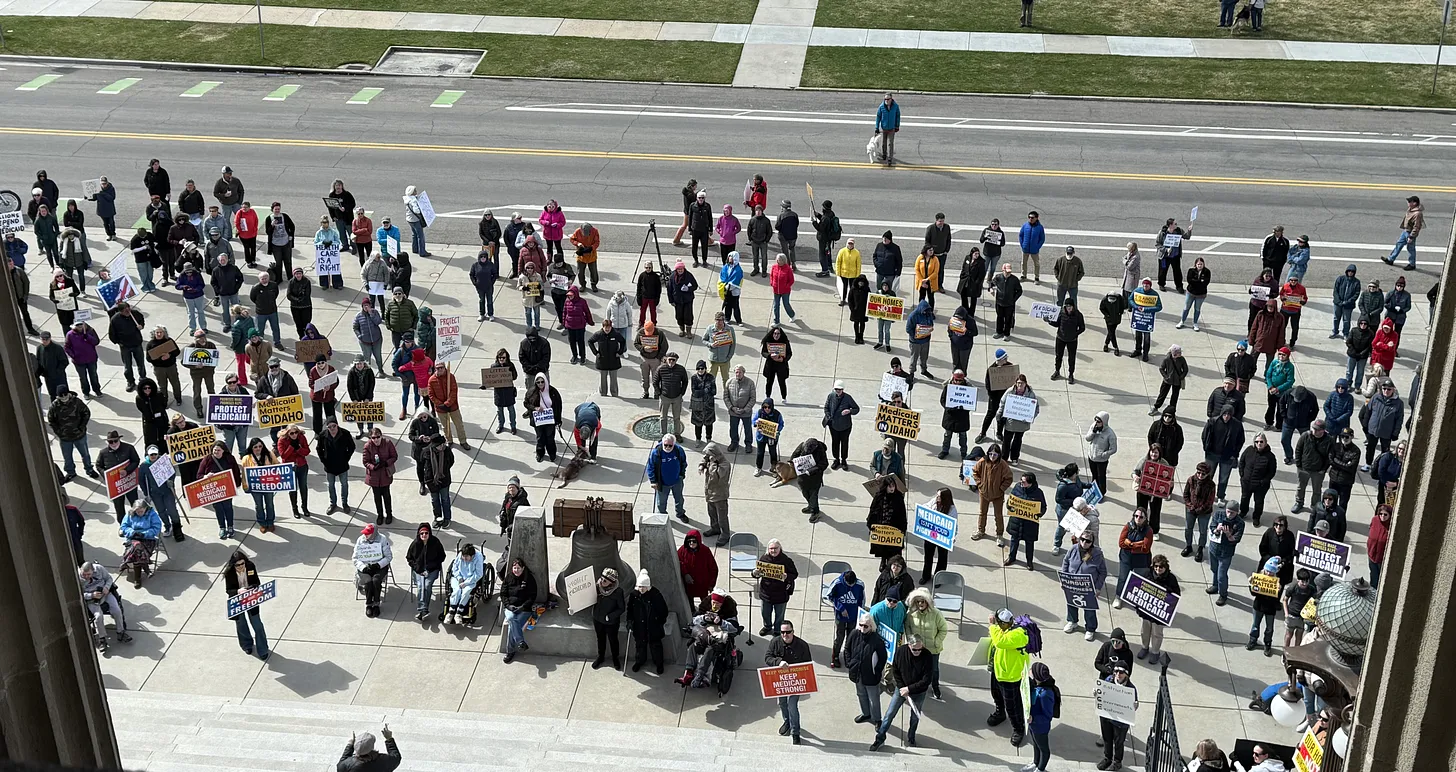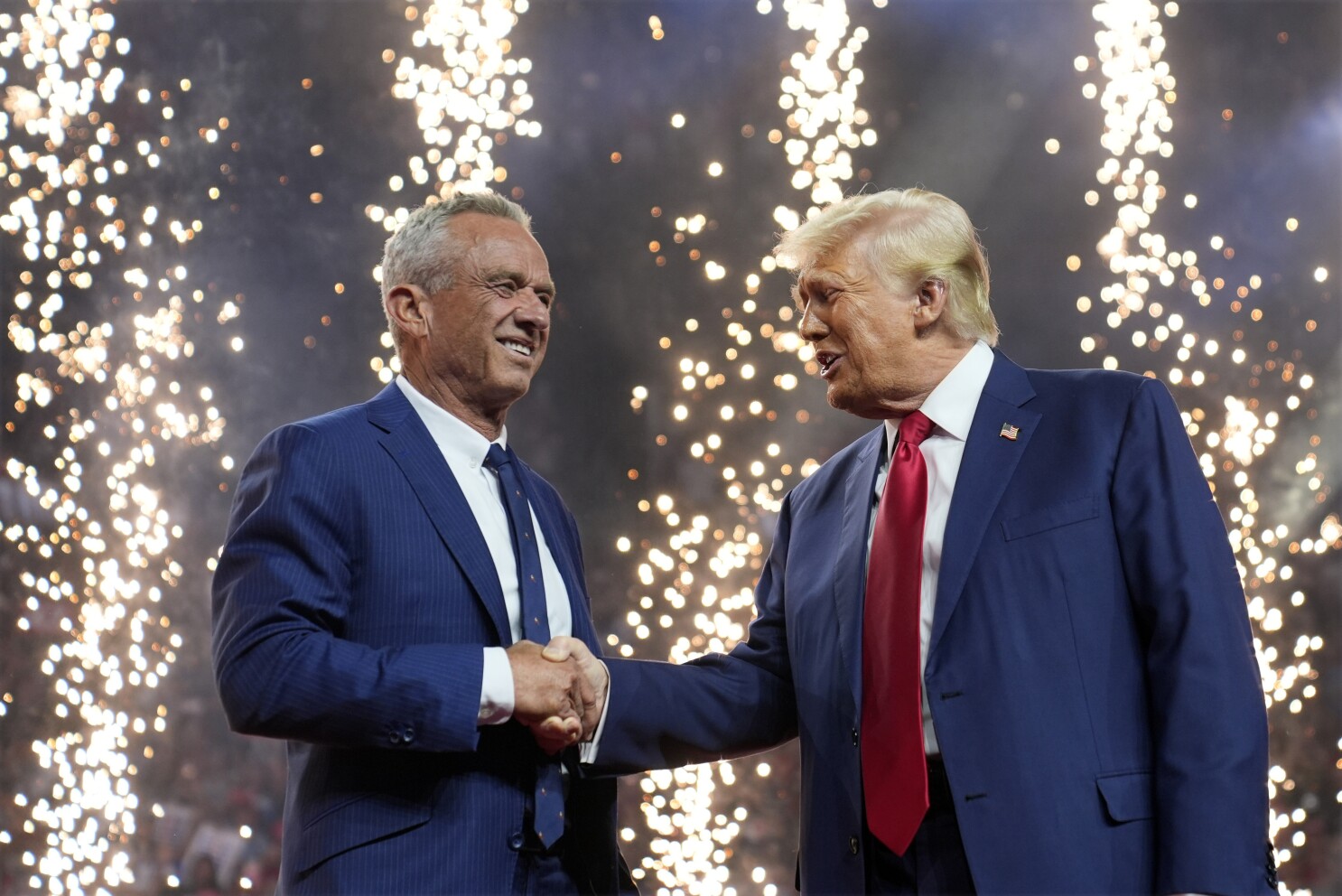The topic of healthcare has long dominated political debates in America, but it seems increasingly divorced from the subject of health itself. Whether during the creation of Medicare and Medicaid in the 1960s, Jimmy Carter’s push for national health insurance in the 1970s, Hillary Clinton’s attempt to nationalize the healthcare industry in the 1990s, or the debates over Obamacare in the 2000s, the focus has consistently been on expanding coverage rather than improving actual health outcomes.
Health insurance coverage is often treated as a proxy for health, much as public health boards treat vaccination rates as a proxy for community wellness. As a result, the national conversation has veered off into debates over costs, regulations, and insurance structures, even as Americans grow increasingly unhealthy.
For a time, the left had a reputation for being more health-conscious, while conservatives generally trusted the food industry. When Ancel Keys claimed that saturated fat caused Dwight Eisenhower’s heart attack, the public accepted it. When the Johnson administration warned about eggs (in part to reduce demand during inflation), we listened. When the government introduced the food pyramid and told us to eat 6–11 servings of bread, pasta, or rice each day, we complied — and our waistlines showed it.
Meanwhile, the left was skeptical of Big Pharma and Big Food. Two decades ago, for example, vaccine skepticism seemed far more common on the left. Robert F. Kennedy Jr., now President Trump’s Secretary of Health and Human Services, was not only a lifelong Democrat but a member of one of the most iconic Democratic families in America.
The COVID-19 pandemic flipped the script. Many Republicans grew skeptical of the official healthcare narrative, especially when a novel vaccine was declared “safe and effective,” or when supposedly nonpartisan experts claimed it was acceptable to protest in the streets in the name of George Floyd, but not to go to work or attend church. Many Democrats, perhaps reflexively, adopted the opposite stance — deferring even more to “experts” for fear of aligning with people they viewed as cranks or morons.
The movement to make America healthy again promoted by Secretary Kennedy and President Trump is a laudable effort to shift the conversation back toward real health outcomes rather than proxies like insurance coverage. But undoing decades of misguided policy and rhetoric won’t happen overnight. Government healthcare programs like Medicare and Medicaid cost taxpayers trillions of dollars each year, counting both federal and state expenditures. The healthcare industry itself has become heavily reliant on government dollars, and millions of Americans depend on these programs for treatment and prescriptions.
The debate over House Bill 109 in the Idaho Legislature this year illustrates the challenge. The Supplemental Nutrition Assistance Program (SNAP) was created to prevent people from going hungry. Lawmakers nobly believed that poverty should not condemn children and families to starvation, so they created a safety net. But if SNAP’s stated goal is to ensure adequate nutrition, we must ask: what counts as nutritious? While there may be debates over whether bread is healthier than meat (it’s not), few would argue that soda — sugar water laced with artificial flavors and caffeine — is in any way nutritious.
Yet when Rep. Jordan Redman proposed removing soda from SNAP eligibility, opponents offered a range of objections:
- Government shouldn’t tell people what they can or can’t buy, even with public benefits.
- Restricting soda purchases would burden vendors.
- Sugary soda is bad, sure, but what about diet soda with artificial sweeteners?
- Who decides what counts as soda or candy?
- Soda can be nutritious, you know.
Secretary Kennedy proposed a similar restriction at the federal level and faced the same backlash. Big Soda even quietly paid MAGA influencers to promote its talking points. Nevertheless, H109 passed in Idaho and was signed by Gov. Little, with fanfare from Kennedy and other Trump Administration officials.
You can see how the perception of SNAP has drifted from its original purpose of promoting nutrition to one of entitlement. The debate morphed into a question of personal liberty and benefit usage, rather than whether the program improves public health.
Imagine if SNAP benefits were limited to items like ground beef, cheese, and green vegetables, then perhaps America would begin to get healthier. As things stand, taxpayers are hit twice: once to subsidize unhealthy foods, and again to pay for the medical care required to treat the resulting chronic illnesses.
My friend Niklas Kleinworth recently left the Idaho Freedom Foundation to work for Paragon Health Institute in Washington, D.C. There, he coauthored a major paper outlining how states exploit Medicaid to shift their own costs onto federal taxpayers:
In what is best described as legalized “money laundering,” health care providers send money to states through a tax “scam” (former President Biden’s description), states use those funds to grow Medicaid spending using federal matching dollars, and providers (those original taxpayers) benefit from higher payments for services they provide to Medicaid recipients. States support these financing schemes, as they enable them to obtain federal funds without any actual state contribution—and they repurpose these funds for additional Medicaid spending, other state spending, or tax cuts.
Kleinworth recently broke down this issue in a radio interview that is well worth your time.
The fundamental structural problem in Medicaid, as in any welfare program where the government pays the bills, is that unlike in a free market, there is no incentive to control costs. Patients have little reason to resist unnecessary tests or procedures, and providers are incentivized to do more, not less, since government reimbursement flows accordingly. Since the federal government covers 60–90% of costs, states also have minimal incentive to rein in spending. At the end of this chain lies a bottomless well of printed or borrowed money, an illusory pot of gold continuously replenished by mortgaging future generations.
Lawmakers often claim that federal dollars are “free money,” and argue that if Idaho doesn’t accept it, California will. While that may be true, it fails to address the deeper issue: states continue to exacerbate the national debt by taking advantage of every possibility to take more printed and borrowed money. Then, with astonishing chutzpah, our lawmakers brag about Idaho’s balanced budget while chiding Congress for its skyrocketing deficits.
Medicaid is expensive, but states play shell games with tax dollars to minimize the appearance of costs while passing as many expenses as possible to the federal government. Hospitals and other providers spend heavily to lobby for policies that benefit their bottom lines. But what’s missing in all this is the actual health of the American people. Lawmakers and policy analysts can debate payment models and managed care structures endlessly without ever asking the most important question: Is this making anyone healthier?
When the Idaho Legislature debated House Bills 138 and 345 this year, welfare recipients and their advocates flooded committee hearings with dire warnings. One woman even said, “Blood will be on your hands.” When Gov. Little signed H345, which reformed the way in which Idaho handles Medicaid without threatening any substantive reductions, dozens of protestors brought pre-printed signs to the Capitol steps denouncing what they had been told were draconian cuts to health coverage.

Again, the core question went unasked: Does this program actually improve health?
What is the purpose of SNAP, Medicaid, or Medicare? What is the purpose of a vaccine? What is the purpose of Idaho’s health districts? Are they truly improving the physical well-being of the people they are meant to serve, or have they become symbolic proxies, detached from real-world outcomes?
If it’s the latter, then we must challenge our lawmakers to reform or even eliminate programs that no longer serve their intended purpose. Making America healthy again requires more than banning artificial food dyes. It demands a fundamental rethinking of how we approach public health. America can become the paragon of the world once more, but it will take time and resolve to get there.
Feature image by Evan Vucci, Associated Press
Gem State Chronicle is a reader-supported publication. To receive new posts and support my work, consider becoming a free or paid subscriber.
About Brian Almon
Brian Almon is the Editor of the Gem State Chronicle. He also serves as Chairman of the District 14 Republican Party and is a trustee of the Eagle Public Library Board. He lives with his wife and five children in Eagle.













